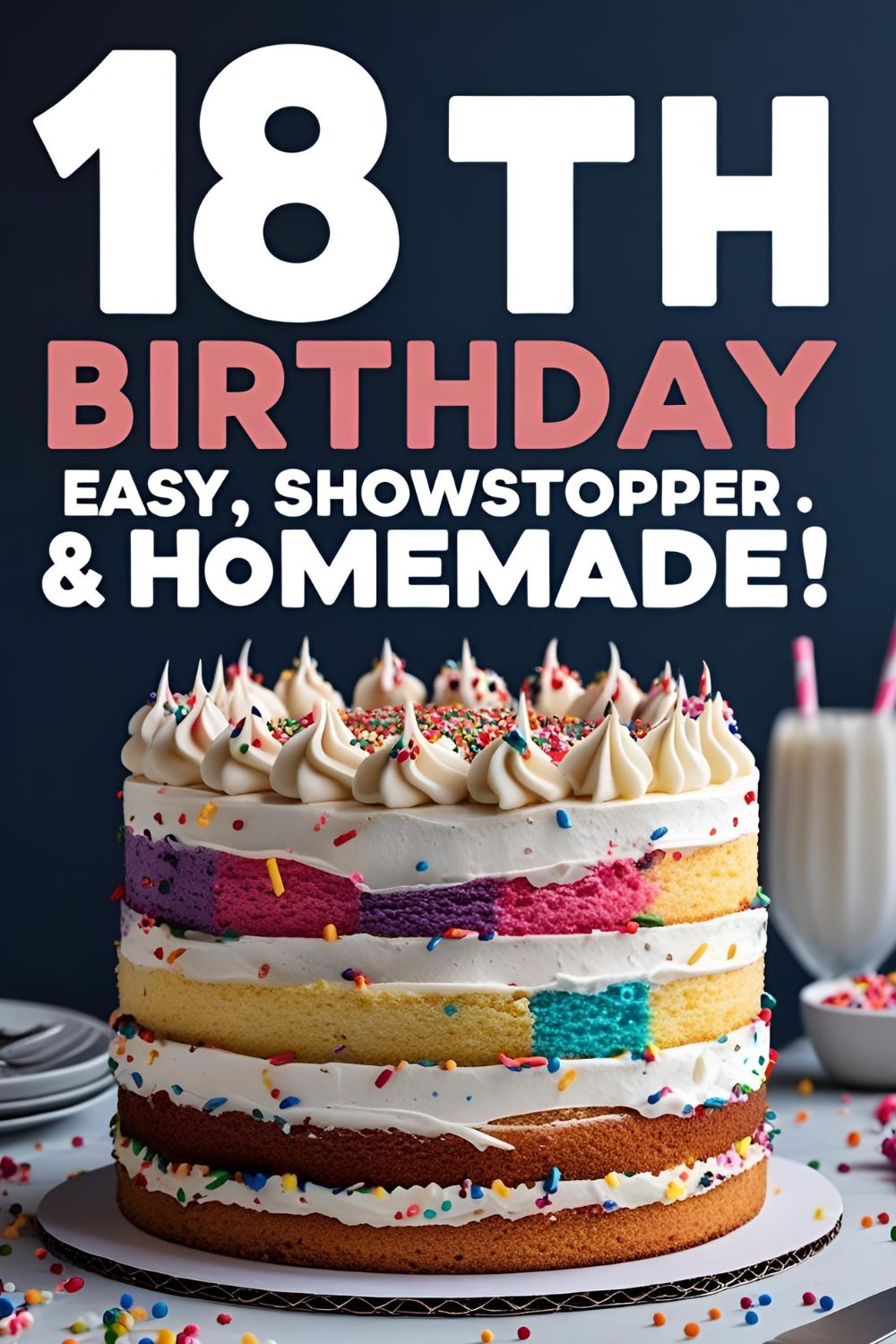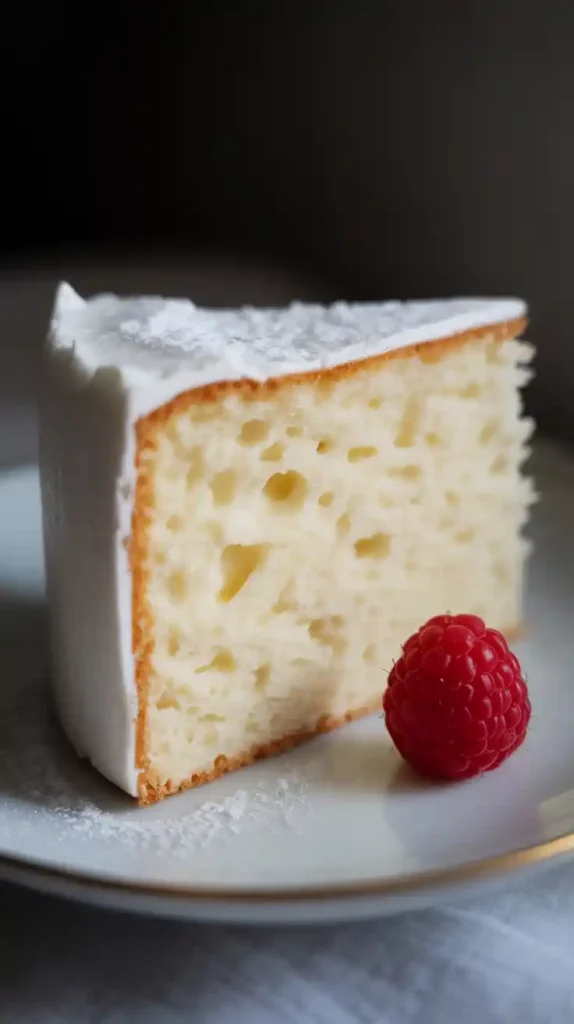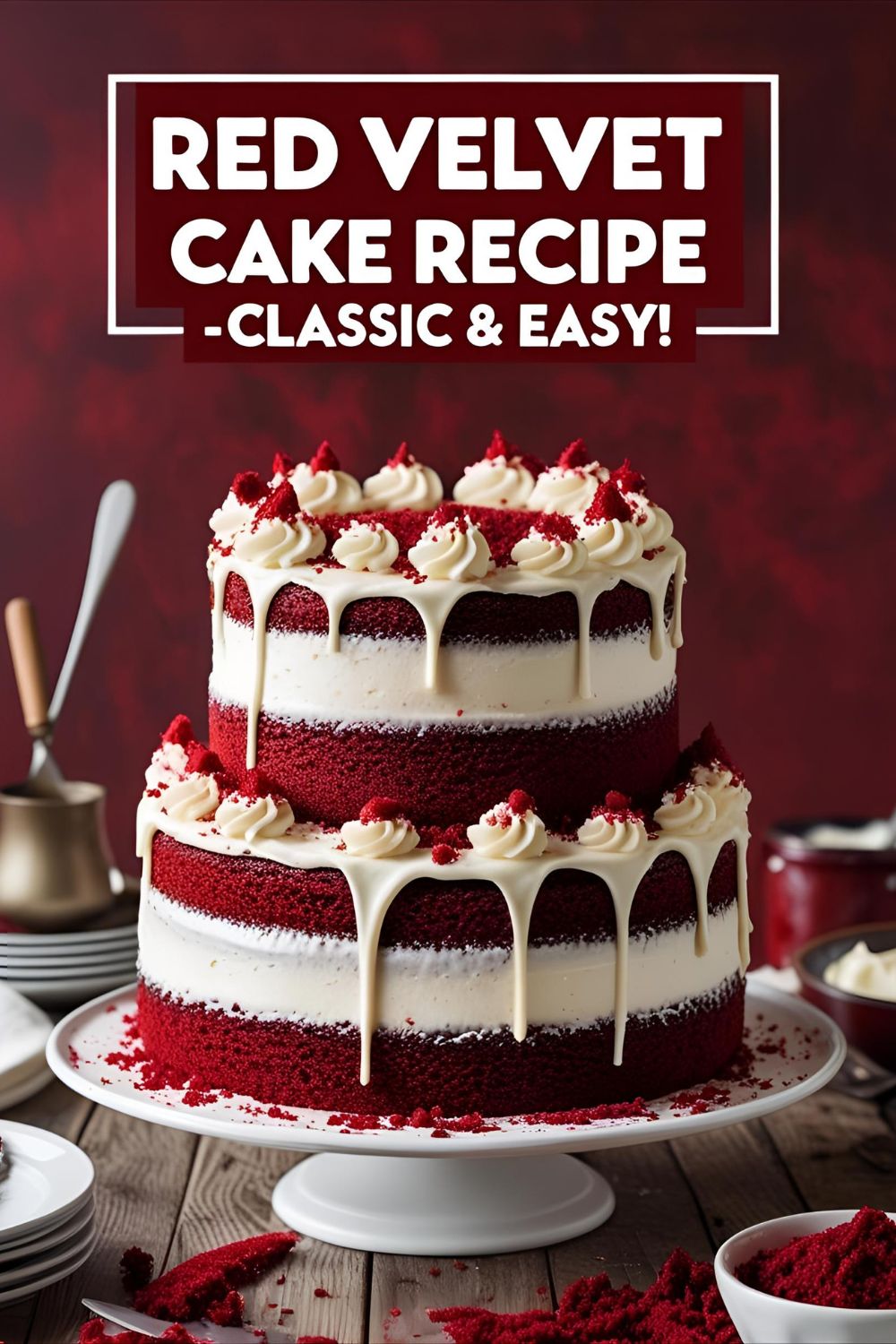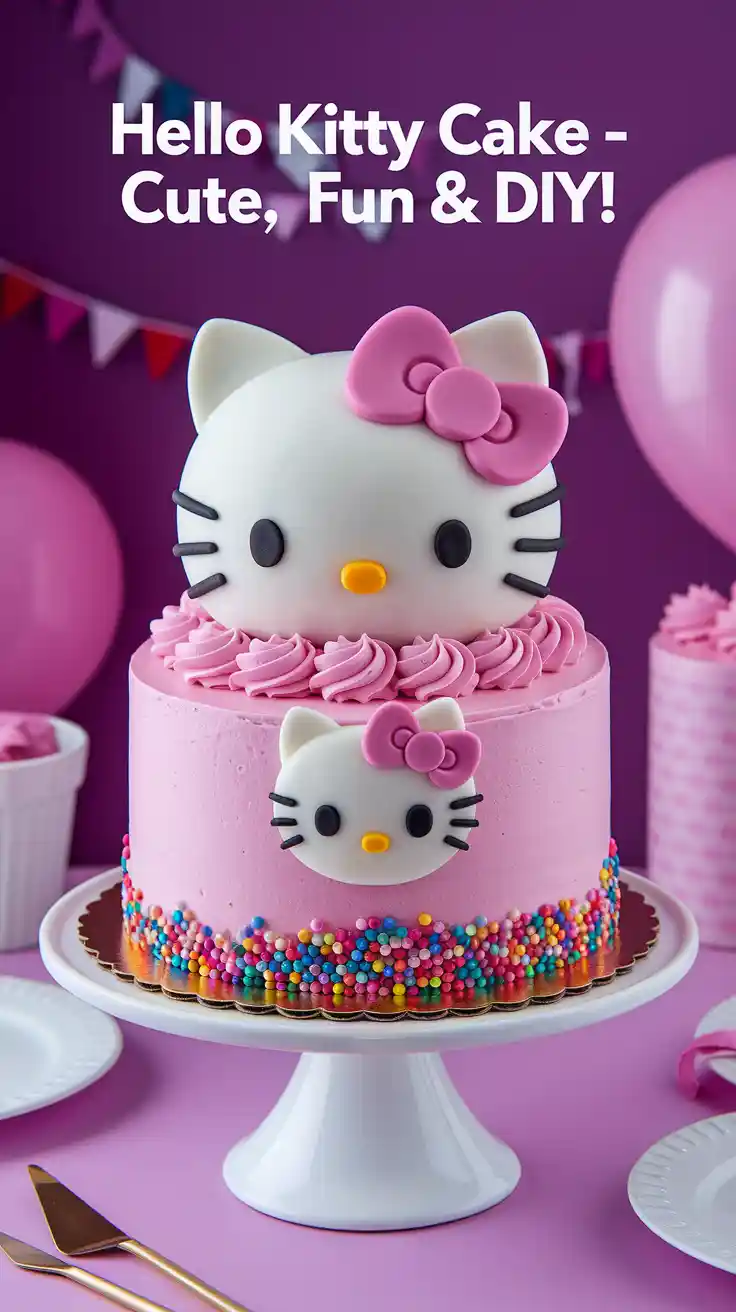The Only Simple White Cake Recipe You’ll Ever Need (Seriously, Ditch the Box)
Let’s be real. Sometimes you just need a good cake. Not a seven-layer, artisanal-lavender-and-hibiscus-infused creation that requires a degree in engineering. Not a cake that looks like a cartoon character. You just need a classic, fluffy, tender, can’t-stop-eating-it, ridiculously delicious simple white cake.
This is that cake. This is the recipe that will make you finally break up with that box mix you keep in the pantry for “emergencies.” This from-scratch cake is surprisingly easy, unbelievably moist, and has a delicate, perfect flavor that will become your new go-to for every birthday, potluck, and “I deserve a piece of cake” Tuesday from now on. Ready to master a classic?
Why This Recipe is an Absolute Treasure
So, what makes this simple white cake so special? It’s all in the details.
- It’s Incredibly Moist and Fluffy: We’re using a few secret weapons—cake flour, buttermilk, and sour cream—to create a cake with a melt-in-your-mouth, super tender crumb. This is the absolute opposite of a dry, crumbly cake.
- The Flavor is Perfection: A true white cake has a unique, delicate flavor that’s a step above plain vanilla. By using only egg whites and a hint of almond extract, we get a clean, light, and ever-so-slightly floral taste that is simply divine.
- It’s the Ultimate Blank Canvas: This cake is the little black dress of the dessert world. It’s perfect on its own with a simple vanilla buttercream, but it’s also the perfect base for any filling, frosting, or decoration you can dream of. It’s the one recipe to rule them all.
The Ingredient List: The Anatomy of a Perfect Cake

The key to a truly great simple cake is using good, simple ingredients.
For the Fluffy White Cake:
- Cake Flour: 2 ¾ cups, sifted. Using cake flour is the secret to a super fine, tender crumb.
- Granulated Sugar: 1 ¾ cups.
- Baking Powder: 2 teaspoons.
- Baking Soda: ½ teaspoon.
- Salt: 1 teaspoon.
- Unsalted Butter: 1 cup (2 sticks), at room temperature. This is non-negotiable!
- Large Egg Whites: 4 (about ½ cup), at room temperature.
- Buttermilk: 1 cup, at room temperature.
- Sour Cream: ½ cup, at room temperature.
- Clear Vanilla Extract: 1 tablespoon. Using clear vanilla helps keep the cake’s color bright white.
- Almond Extract: ½ teaspoon. This is the secret flavor note of a classic white cake.
For the Simple Vanilla Buttercream:
- Unsalted Butter: 1 ½ cups (3 sticks), softened.
- Powdered Sugar: 5 cups, sifted.
- Vanilla Extract: 1 tablespoon.
- Milk or Heavy Cream: 3-5 tablespoons.
- A Pinch of Salt.
Tools & Kitchen Gadgets: Your Baking Starter Kit
You don’t need anything too fancy for this classic, just the basics done right.
- Two 9-inch Round Cake Pans.
- A Stand Mixer or a reliable Hand Mixer.
- A Flour Sifter or a Fine-Mesh Sieve: Don’t skip this! It makes the cake extra light.
- A good Rubber Spatula.
- A Cake Turntable (optional): Makes frosting a million times easier.
- An Offset Spatula: For that smooth, swoopy frosting finish.
Step-by-Step Instructions: Let’s Bake a Masterpiece
Ready to make the best white cake of your life? It’s easier than you think.
Step 1: The All-Important Prep
- Prep your pans: Preheat your oven to 350°F (175°C). Grease and flour your two 9-inch round cake pans.
- Sift your dry ingredients: In a large bowl, sift together the cake flour, sugar, baking powder, baking soda, and salt. Give it a quick whisk to combine.
- Mix your wet ingredients: In a separate medium bowl, whisk together the egg whites, buttermilk, sour cream, clear vanilla extract, and almond extract.
Step 2: The Creaming
In the bowl of your stand mixer, beat the room temperature butter on its own for about a minute until it’s smooth and creamy. This gives it a head start.
Step 3: The “Reverse Creaming” Magic
- With the mixer on low speed, add the sifted dry ingredients to the butter all at once. Mix until the mixture resembles coarse, damp sand. This method coats the flour in fat, which results in a super tender cake.
- Pour in about half of the wet ingredient mixture. Mix on low to combine, then increase the speed to medium-high and beat for about 90 seconds.
- Reduce the speed back to low and stream in the remaining wet ingredients, mixing only until the batter is smooth and combined. Do not overmix! Scrape down the bowl to make sure everything is incorporated.
Step 4: The Bake and Cool
Divide the batter evenly between your two prepared pans. Bake for 30-35 minutes, or until a wooden skewer inserted into the center comes out with a few moist crumbs attached. Let the cakes cool in their pans for 15 minutes before turning them out onto a wire rack to cool completely.
Step 5: The Frosting
While the cakes cool, make your buttercream. In your stand mixer, beat the softened butter until it’s creamy. On low speed, gradually add the sifted powdered sugar. Add the vanilla, salt, and 3 tablespoons of milk, then beat on medium-high speed for 3-5 minutes until it’s very light and fluffy. Add more milk if needed to reach a perfect, spreadable consistency.
Calories & Nutritional Info (A Slice of Simplicity)
It’s cake. It’s a delicious treat. Let’s not ruin the moment with excessive math.
- Serving Size: One generous, well-deserved slice.
- Calories: A perfectly reasonable amount for a perfect piece of cake.
- Good For: Celebrating literally anything, or nothing at all.
Common Mistakes to Avoid (The Most Common Cake Fails)
- Using Cold Ingredients: I am going to be dramatic about this because it is the #1 reason homemade cakes fail. If you use cold butter, cold eggs, or cold buttermilk, your batter will not emulsify properly, and you will end up with a dense, heavy, dry cake. Everything must be at room temperature. Let it sit on your counter for at least an hour.
- Overmixing the Batter: As soon as you add the liquid to the flour, you start developing gluten. If you beat the batter like it owes you money, you will get a tough, rubbery cake. Mix only until the ingredients are just combined.
- A Secretly Yellow Cake: The whole point of a white cake is that it’s white! Using whole eggs will add a yellow tint from the yolks. For that snowy-white, delicate crumb, you must use only the egg whites.
- Frosting a Warm Cake: This is a classic rookie mistake. If your cake is even slightly warm, it will melt your beautiful buttercream into a soupy, sliding, tragic mess. Your cakes must be 100% completely cool.
Variations & Customizations (Pimp Your Plain Jane)
This simple white cake is the perfect canvas for your creativity.
1. The Ultimate Funfetti Cake
The easiest and most joyful upgrade. Gently fold about ¾ cup of classic rainbow jimmies (the long, skinny sprinkles) into your finished cake batter right before you pour it into the pans. Do not use the little nonpareil balls, as their color will bleed and make your cake look grey.
2. The Bright & Zesty Lemon Drop Cake
Add the zest of two lemons to your sugar before you start mixing the cake. For the frosting, replace 1-2 tablespoons of the milk with fresh lemon juice. It’s a bright, fresh, and incredibly delicious twist.
3. The Coconut Cream Dream
A tropical vacation in a cake. Substitute the buttermilk with an equal amount of canned, full-fat coconut milk and add 1 teaspoon of coconut extract to the batter. Once the cake is frosted, press sweetened, shredded coconut all over the sides and top.
FAQ: Your Most Pressing Cake Questions
What’s the real difference between a white, yellow, and vanilla cake?
- White Cake: Uses only egg whites, giving it a pure white color and a very light, delicate crumb.
- Yellow Cake: Uses whole eggs. The yolks provide fat and color, resulting in a richer, more custardy flavor and a yellow hue.
- Vanilla Cake: Is a broad term for any cake where vanilla is the primary flavor. It can be a white cake or a yellow cake.
What am I supposed to do with all these leftover egg yolks?
Don’t you dare throw them out! You can use them to make a rich crème brûlée, homemade mayonnaise, a silky hollandaise sauce, a tangy lemon curd, or a delicious pasta carbonara.
Can I use all-purpose flour instead of cake flour?
You can, but the cake won’t be quite as tender. To make a DIY substitute for cake flour: for every 1 cup of all-purpose flour, remove 2 tablespoons of flour and replace it with 2 tablespoons of cornstarch. Sift this mixture together a few times before using.
Can I turn this recipe into cupcakes?
Absolutely! This recipe will make about 24 beautiful cupcakes. Just line your muffin tin with paper liners and bake for about 18-22 minutes.
Why did my beautiful cake sink in the middle?
The most common culprits are opening the oven door too early (which causes a sudden temperature drop) or underbaking the cake. Make sure that skewer comes out clean!
Final Thoughts
You’ve done it. You have now mastered the art of the simple, perfect, from-scratch white cake. You possess the one recipe that can be adapted for any birthday, any holiday, any potluck, or any random craving. You have a secret weapon in your baking arsenal.
So go forth and bake. Enjoy the simple, pure, unadulterated joy of a perfect piece of cake. You’ll never look at that box mix in your pantry the same way again.



